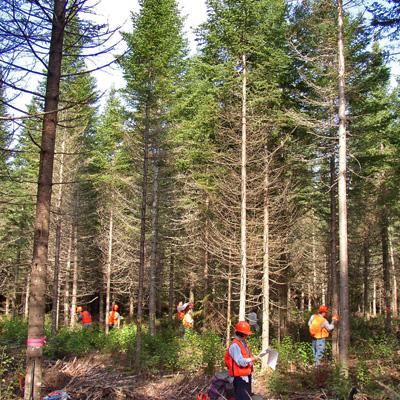Monitoring Physiological Responses of Forest Trees to Thinning Treatments in Order to Evaluate the Use of Selected Metabolites as Markers of Tree Health and Stand Productivity

Silvicultural treatments cause disturbances in forest ecosystems that can temporarily increase nitrification (conversion of ammonia into nitrites and nitrates by soil bacteria) and leaching of nitrogen and other nutrients from soils. These changes can alter the physiology of trees. Physiological responses to rapid changes in their environment enable trees to survive and exploit new growing conditions. A new method of assessing physiological changes that relate to future increases and decreases in tree growth could provide forest managers with a tool for predicting growth responses to silvicultural activities. Shifts in tree biochemical make-up provide "markers" that may allow early prediction of changes in tree growth and forest productivity.
NSRC researchers investigated the physiological mechanisms resulting from changes in forest stand dynamics caused by specific silvicultural treatments. In mid-summer of 2007 and 2008 on two pre-commercially thinned and two non-pre-commercially thinned study sites in Maine (alternating two sites/year), researchers collected foliage samples from 15 canopy spruce and fir trees per treatment. In the laboratory, they analyzed foliage for inorganic ions, polyamines, amino acids, soluble proteins, and chlorophyll.
Changes observed in tree metabolism due to thinning were tree species and site specific. One to three years after thinning, an increase in nitrogen-containing metabolites was seen at some sites due to the release of nitrogen. This change reversed itself with time. No change in metabolic concentrations with increasing growth indicated that no major stress was caused by thinning. Trees on sites that had greater foliage nutrient levels grew faster. Findings helped researchers understand more about the complexity of trees' early biological response to thinning.
Download printable version [PDF]
Download full final report [PDF]
